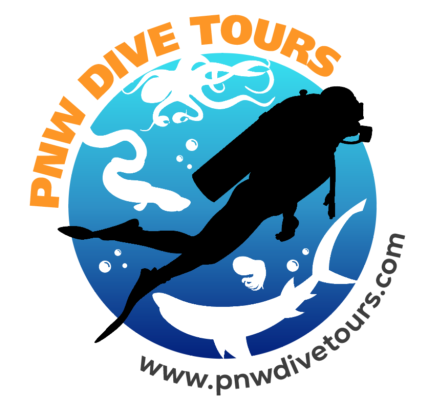Boat Hull Inspection by Divers
An in-water hull inspection performed by divers is a comprehensive visual and tactile examination of your boat’s underwater components, carried out by certified commercial divers. This service is crucial for maintaining your vessel’s integrity, performance, and value, allowing for early detection of issues that aren’t visible from the surface.
During the inspection, our divers meticulously check:
Hull Condition: They’ll look for signs of fouling (algae, barnacles), blisters, cracks, structural damage, or delamination. This includes examining the hull’s coating for wear, scratches, or other anomalies.
Propellers and Shafts: Divers inspect for bent blades, entanglement (fishing line, nets), corrosion, or prop damage that can impact speed, fuel efficiency, and cause vibrations. They also check the propeller shaft for alignment issues or excessive play.
Rudders and Steering Gear: They assess the rudder’s condition, looking for damage, excessive movement, or issues with the rudder stock and bearings.
Zinc Anodes (Zincs): A critical part of the inspection is evaluating the sacrificial zinc anodes. Divers check their size, attachment, and the extent of their corrosion. They’ll advise on replacement if the zincs are depleted, ensuring your boat’s vital metal components remain protected from electrolysis.
Through-Hull Fittings & Seacocks: All underwater intakes and discharges are inspected for blockages, leaks, or damage. Seacocks are checked for proper operation and any signs of deterioration.
Keel and Stabilizers: For vessels with these components, divers will inspect them for damage, alignment, or excessive marine growth.
Thrusters (Bow/Stern): If equipped, thruster props and housings are examined for fouling or damage that could affect their functionality.
Using specialized underwater tools and cameras, divers can provide detailed reports, often including photographs or video footage, giving you a clear picture of your vessel’s underwater health. This proactive approach helps prevent costly repairs, ensures safety, and optimizes your boat’s performance.
Boat Hull Inspection Pricing
Ensure the health and longevity of your vessel with our comprehensive in-water hull inspection services, performed by certified commercial divers. Our detailed examination identifies issues early, saving you time and costly repairs down the line.
Every inspection includes a thorough visual and tactile examination of the following underwater components:
Hull: Fouling, blisters, cracks, structural damage, coating integrity.
Propellers & Shafts: Damage, entanglement, corrosion, alignment.
Rudders & Steering Gear: Condition, movement, bearing issues.
Zinc Anodes: Condition, depletion level (replacement recommendations provided).
Through-Hull Fittings & Seacocks: Blockages, leaks, damage.
Keel & Stabilizers: Damage, alignment, growth (if applicable).
Thrusters (Bow/Stern): Fouling, damage (if equipped).
Standard Hull Inspection Packages
Our inspection packages are priced based on the length of your vessel, as this generally correlates with the time and complexity of the dive.
Vessels up to 25 ft:
Price: Starting at $150
Includes comprehensive inspection, verbal summary, and basic written report.
Vessels 26 ft – 40 ft:
Price: Starting at $250
Includes comprehensive inspection, verbal summary, and detailed written report.
Vessels 41 ft – 60 ft:
Price: Starting at $375
Includes comprehensive inspection, verbal summary, and detailed written report.
Advanced & Specialized Inspections
For larger vessels, complex systems, or specific documentation needs, we offer enhanced inspection services.
Vessels 61 ft – 80 ft:
Price: Starting at $550
Includes comprehensive inspection, detailed written report, and high-resolution photo documentation of key findings.
Vessels over 80 ft (or Commercial/Complex Systems):
Price: Custom Quote
Contact us for a personalized estimate. May include multiple divers, extended dive times, and specialized reporting/video.
Optional Add-Ons
Photo Documentation Package:
Price: $75 (for vessels up to 60ft, included in 61-80ft package)
Receive a digital album of high-resolution photos highlighting hull condition, running gear, zincs, and any notable findings.
Video Documentation Package:
Price: $150 (for vessels up to 60ft)
Receive a short, edited video tour of your hull’s condition, providing an in-depth visual assessment.
Emergency / Expedited Service Fee:
Price: +$100 – $250 (varies by urgency and availability)
For inspections required within 24-48 hours.
Important Notes:
Depth Surcharge: For vessels moored in depths exceeding 40 feet, an additional surcharge of $25 – $50 may apply per 20 feet of additional depth, due to increased dive time and decompression considerations.
Location Surcharge: Travel fees may apply for vessels located outside our primary service area (e.g., beyond Puget Sound central areas like Seattle/Tacoma/Everett). Please inquire for specific locations.
Scheduling: All services are subject to diver availability and safe diving conditions (weather, currents).
Ready to ensure your boat is in top condition below the waterline?
Contact PNW Dive Tours today to schedule your in-water hull inspection!
Zinc Anode Replacement
Zinc anodes are essential for protecting your boat’s underwater metal components from corrosion caused by electrolysis. Think of them as your boat’s first line of defense! Because these “sacrificial” zincs wear away over time, regular inspections and timely replacements are crucial to prevent expensive damage to your vessel.
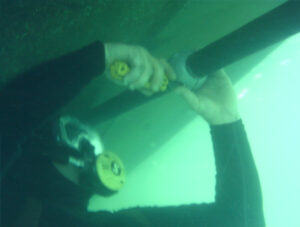
Zinc Lifespans
Water Environment
The type of water your zinc anode is exposed to affects its lifespan. Saltwater speeds up corrosion, brackish water causes unpredictable wear, and freshwater can lead to a passive layer that reduces effectiveness.
Electrical Load & Galvanic Activity
If your system has a high electrical current demand or multiple dissimilar metals in contact, your zinc anode will wear out faster. Stainless steel, bronze, and other noble metals can increase zinc degradation.
Anode Size & Placement
Smaller anodes deplete more quickly, while improper placement may cause uneven wear or insufficient protection. Proper sizing and strategic placement help maximize effectiveness.
Water Temperature
Higher temperatures accelerate electrochemical activity, causing zinc anodes to corrode more rapidly. Warmer waters often lead to shorter anode lifespans. Expect more frequent replacements in summer.
Signs Your Zincs Need Replacement
Knowing when to replace your zinc anodes is key to protecting your boat from corrosion. Regular inspections help catch warning signs early, preventing costly repairs.
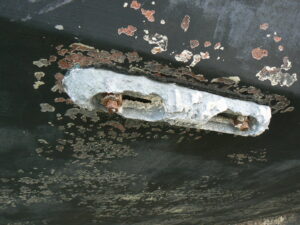
Excessive Wear or Thinning
Zinc anodes should be replaced when they are more than 50% depleted. If they appear significantly worn down, they are no longer providing full protection.
Cracking or Brittleness
A zinc anode that is cracked, brittle, or breaking apart is ineffective and needs immediate replacement. Structural failure means it can no longer sacrifice itself to protect your boat.
Heavy Corrosion or Chalky Coating
If your anodes have a thick layer of corrosion or a chalky white coating, they may not be functioning properly. This buildup can reduce their ability to prevent electrolysis damage.
Signs of Electrolysis Damage
Pitting, discoloration, or other visible corrosion on your propeller, shaft, or metal fittings can indicate that your zincs have completely worn out. If your metal parts are showing these signs, replace your anodes immediately.
Zinc Anode Replacement & Initial Inspection
Protecting your boat’s vital underwater metals from corrosion is crucial, and zinc anodes are your first line of defense. We provide professional zinc inspection and replacement services to ensure your vessel remains safeguarded against the damaging effects of electrolysis.
We’ll start with a thorough inspection of your existing zinc anodes and overall underwater integrity. Following this, you’ll receive a detailed estimate before any work begins.
Our Pricing:
Initial Zinc Inspection Fee: $75.00
This fee covers a comprehensive in-water assessment of all your vessel’s zinc anodes. We’ll check their condition, remaining lifespan, and proper attachment. This inspection fee is waived if you proceed with zinc replacement services during the same visit.
Zinc Anode Installation: $25.00 per zinc + Cost of Parts
This includes the professional in-water installation of each new zinc anode. The price of the zinc anode itself will be added to your total.
Optional Add-Ons: Visual Documentation
Want to see exactly what’s happening below the waterline? Add our photo or video documentation to your inspection.
Photo Documentation Package: $50.00
Receive a digital album of high-resolution photos highlighting the condition of your zincs and any other notable underwater findings.
Video Documentation Package: $100.00
Get a short, edited video tour of your zinc anodes and surrounding hull area, providing an even more detailed visual assessment.
| Type | Observed Lifespan | Typical Part Price |
|---|---|---|
| Shaft | 3-4 Months | $20-$30 |
| Rudder & Trim Tab | 6 Months | $15-$25 |
| Hull (Plate) | 10 Months | $70-$130 |
| Propeller | 4-6 Months | $10-$20 |
The prices and lifespans in this table are a real rough estimate from what we’ve observed during our numerous zinc replacements in Puget Sound. Zinc lifespans can vary greatly for reasons as simple as where your vessel is docked. Take this table with a healthy grain of salt.
Don’t Let Lost Gear Ruin Your Dive! Professional Lost Gear Recovery
Losing valuable gear underwater can be incredibly frustrating and costly. Whether it’s a dropped mask, a runaway fin, or essential dive equipment, the thought of it sitting on the seabed can be a real downer. At PNW Dive Tours, we understand the unique challenges of diving in the Pacific Northwest, and we’re here to help you retrieve what’s rightfully yours.
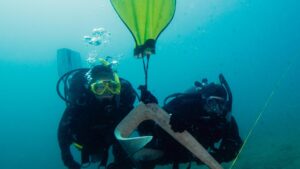
Our experienced and equipped dive team specializes in efficient and careful lost gear recovery. Using systematic search patterns, specialized lifting bags, and keen underwater observation skills, we work diligently to locate and safely bring your lost items back to the surface. We know how important your equipment is, and we’ll treat your recovery mission with the urgency and precision it deserves.
Why trust PNW Dive Tours with your lost gear?
Experienced Divers: Our team consists of highly trained and certified professionals familiar with local dive conditions and recovery techniques.
Specialized Equipment: We utilize the right tools for the job, increasing the chances of a successful retrieval.
Cost-Effective Solution: Recovering your existing gear is often far more affordable than replacing it.
Peace of Mind: Get your valuable equipment back and eliminate the worry of what’s lingering below.
Lost Gear Recovery Pricing: Urgent & Emergency Service
Losing valuable gear underwater is always frustrating, but when time is of the essence, you need a rapid response. At PNW Dive Tours, we understand the urgency. Our experienced dive team is available for expedited and emergency lost gear recovery to help you retrieve your critical items quickly and efficiently.
Initial Dive Fee: $75.00
Plus 25% of the total value of the object recovered.
Standard & Advanced Recovery
Our core recovery services are designed to locate and safely retrieve your lost equipment.
Basic Search & Recovery (Up to 40 ft Depth, 1 Hour Dive Time): Starting at $75.00
Includes initial search, recovery attempt, and basic equipment handling.
Advanced Recovery (41 ft – 80 ft Depth, Complex Conditions, Extended Search): Starting at $150/hour
Priced per hour, suitable for deeper losses, larger items, or challenging visibility/currents.
Specialized/Heavy Item Recovery: Custom Quote
For very large, heavy, or delicate items requiring specialized rigging, multiple divers, or extended bottom time. A detailed quote will be provided after an initial assessment.
Urgent & Emergency Response Surcharge
When immediate action is required, an expedited service fee applies to ensure our divers can be deployed as quickly as possible.
Urgent / Same-Day Response (Within 24 hours): Add $100.00
Emergency / Immediate Response (Within 4 hours, subject to availability): Add $200.00
Please Note:
The initial dive fee of $75.00 and the 25% recovery fee are in addition to any other applicable service charges (e.g., hourly rates, urgent/emergency surcharges).
Pricing is an estimate and may vary based on depth, visibility, current, complexity of the loss, and total dive time required.
A non-refundable assessment fee may apply for initial site surveys or highly complex recovery plans before the main recovery efforts begin.
We’ll discuss the estimated costs and recovery plan with you thoroughly before commencing any extensive search or emergency deployment.
Emergency response is subject to diver availability and safe diving conditions. We’ll confirm estimated arrival and recovery times upon contact.
Don’t let lost gear derail your plans! For urgent assistance, call PNW Dive Tours immediately with the details of your lost gear, and let’s get it back where it belongs.
Tips for Noting Where the Object Was Lost
Accurately marking the location where an object was lost is crucial for a successful recovery. Here are three effective methods:
1. Using a Boat Chartplotter to Set a Waypoint
This is often the most precise method if you have a modern boat with a GPS chartplotter.
Immediate Action: The instant you realize something is lost, mark your current position on your chartplotter. Most chartplotters have a “Man Overboard” (MOB) function or a quick “Mark Waypoint” button. This will record the precise latitude and longitude of your boat at that exact moment.
Drift Consideration: Remember that your boat may have drifted slightly since the item went overboard, or the item itself may have drifted with currents. The waypoint marks your boat’s position when you noticed the loss, not necessarily the item’s final resting place.
Record Details: Immediately write down the coordinates (latitude and longitude) displayed on the chartplotter, along with the date and time. Note the estimated depth at that location from your depth sounder.
2. Known Depth and Time
Even without a chartplotter, knowing the depth and time of loss can be invaluable.
Record Depth: If your boat has a depth sounder, note the exact depth at the moment the item was lost. This helps divers narrow down the search area vertically.
Record Time: Note the precise time of the loss. This can be critical for understanding current effects and drift, especially if the object is buoyant or if strong currents are present.
Approximate Location: While less precise than a waypoint, combine this information with your general knowledge of your location (e.g., “about 100 yards off the red buoy near Point X”).
3. Using Fixed Points of Reference on Land (Triangulation)
This classic method helps pinpoint a location by taking bearings to identifiable landmarks on shore. Aim for at least three fixed points for the best accuracy.
Identify Landmarks: Choose easily identifiable and stationary objects on land, such as:
Lighthouses
Distinctive buildings (e.g., a tall church steeple, a prominent water tower)
Mountain peaks or unique rock formations
A permanent navigation marker (e.g., a fixed daymark or large buoy)
Take Bearings:
Visually Align: Position your boat so that two of your chosen fixed points on land appear to be in a straight line (or “bisect”) with where you believe the object was lost. Imagine a line extending from one landmark, through your boat’s position, to the other landmark. This creates your first “line of position.”
Repeat for Second Pair: Move your boat to a different position (if possible, or visually align from your current position) and find a second pair of fixed land points that also appear to bisect the loss location. This creates your second “line of position.”
Third for Accuracy (Preferred): Repeat the process with a third pair of fixed points if possible, or use a single prominent landmark and an estimated bearing to it if you have a compass.
Sketch It: Draw a simple sketch of the shoreline, marking your chosen landmarks. Then draw lines from these landmarks intersecting at the approximate location where you believe the item was lost.
Describe Clearly: In your report to the dive team, describe the landmarks precisely (e.g., “The red and white lighthouse directly in line with the large white house on the hill,” or “The peak of Mount Rainier aligned with the green buoy”).
By using a combination of these methods, you provide the recovery team with the most accurate information possible, significantly increasing the chances of retrieving your lost gear.
Secure Your Vessel: Professional Mooring Buoy Inspection
A reliable mooring buoy is your boat’s silent guardian, providing a safe and secure resting place. However, the harsh marine environment can take its toll, compromising the integrity of even the most robust systems. Don’t leave your valuable asset to chance! PNW Dive Tours offers expert mooring buoy inspection services to ensure your vessel is always securely anchored.
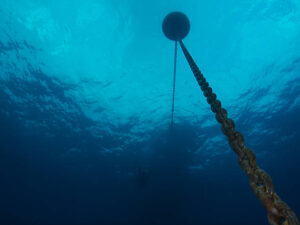
Our certified divers conduct thorough, in-water assessments of your entire mooring system, from the buoy itself down to the seabed anchor. We identify wear, corrosion, or damage that could lead to catastrophic failure, providing you with peace of mind and protecting your investment.
Our Mooring Buoy Services Include:
Comprehensive Inspection:
Buoy Condition: Checking for cracks, fading, marine growth, or damage to the flotation device.
Chain/Rope Integrity: Meticulous inspection of all chain links, shackles, swivels, and rope sections for wear, rust, thinning, or fraying.
Anchor Assessment: Visual inspection of the anchor type, its embedment in the seabed, and any signs of dragging or instability.
Hardware Check: Ensuring all connecting hardware (thimbles, clevis pins, etc.) is secure and free from excessive wear or corrosion.
Detailed Reporting: We provide a comprehensive report, often with underwater photos or video, outlining the condition of each component and recommending necessary maintenance.
Why choose PNW Dive Tours for your mooring needs?
Safety First: We prioritize the security of your vessel with meticulous inspections and proper installation.
Expert Knowledge: Our divers possess in-depth understanding of marine environments and mooring system dynamics.
Proactive Maintenance: Identify potential issues before they become costly emergencies.
Local Expertise: Familiarity with Pacific Northwest seabed conditions and regulations
Mooring Buoy Inspection
Standard Mooring Buoy Inspection (Visual & Tactile, Report Included): Starting at $XXX
For typical recreational moorings up to 60ft depth.
Advanced Inspection (Deeper/Complex Moorings, Detailed Photo/Video Report): Starting at $YYY
For larger vessels, commercial moorings, or challenging conditions requiring extended dive time and advanced documentation.
Please Note:
Exact pricing will be determined after an initial consultation and assessment of your specific mooring system, location, and required services.
Ensure your vessel is safely secured. Contact PNW Dive Tours today to schedule your mooring buoy inspection.
